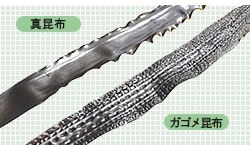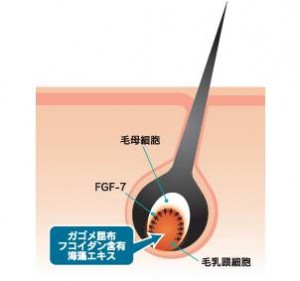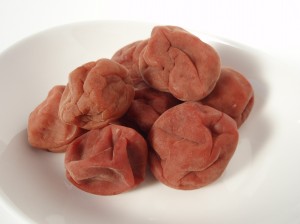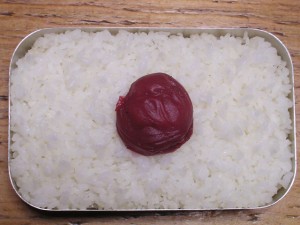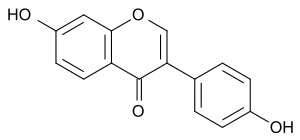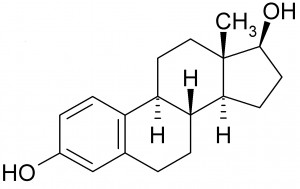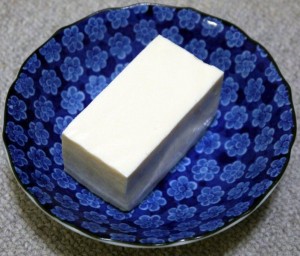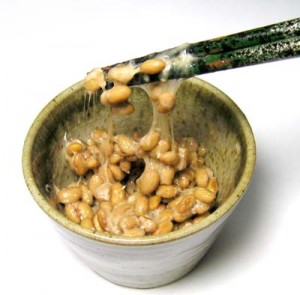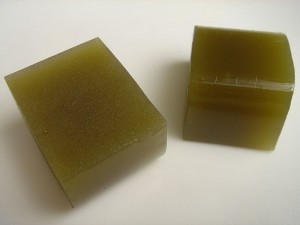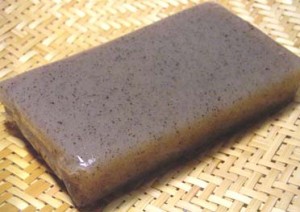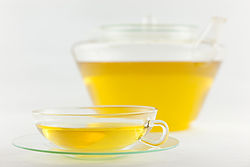Kugako Sugimoto, NOST Tokyo
Origineel gepubliceerd op de site van Agentschap NL.
Van oudsher worden aan Japans voedsel allerlei kwaliteiten toegedicht die tot voor kort niet of nauwelijks wetenschappelijk te bewijzen waren. Langzamerhand wordt duidelijk dat wetenschap en technologie wel kunnen aantonen dat Japanse voedingsmiddelen een biologische, functionele of medische functie kunnen hebben.
Japanese Food and Life Science
Japanese food offers a lot of opportunities. It can be used for cosmetics, functional food, and medicine. Folklore and old sayings about efficacy of food are now starting to be proven by science and technology. Products containing effective substances from traditional Japanese food are already in the markets.
Details
Introduction
In Japan, there is an extensive folklore about food that is good for health and beauty. It is said for example, that seaweed is beneficial for beautiful hair. Pickled plums keep the doctor away in Japan like an apple a day keeps the doctor away in the western world. Recent technology is beginning to unearth the effectiveness and mechanisms as to why these traditional foods benefit health. Companies and researchers in life sciences in Japan look at these traditional foods and are trying to produce cosmetics, functional food, and medicines with them.
Seaweed
Takara Bio Inc. manufactures hair products (quasi-drug) containing fucoidan which is obtained from brown algae. The company uses a particular type of brown algae, called Gagome kelp (Kjellmaniella crassifolia), which grows in the confined coastal area of Hokkaido, Japan’s northern island (Fig.1). Gagome kelp compared to other types of brown algae, effectively produces F-fucoidan among other fucoidans.
Fig.1 Gagome kelp on the right and Japanese kelp (Laminaria japonica) on the left. (Takara Bio Inc.)
According to the studies done by Takara Bio Inc., F-fucoidan stimulates the production of FGF-7, a signal factor for differentiation and multiplication in dermal papilla cells (Fig. 2). FGF-7 prevents shifting to the regression phase leading to the rest stage of hair matrix cells. As a result, hair stays longer in the growth phase and loosing hair is prevented. In addition, FGF-7 stimulates proliferation of hair matrix cells and makes hair longer.
Fig.2. Hair and hair root. Gagome kelp extract including fucoidan stimulates the production of FGF-7 in dermal papilla cells (dark orange). FGF-7 acts on hair matrix cells (white). (Takara Bio Inc.)
Dermal papilla cells (HFDPC) cultured with the addition of 100 – 1000 μg/ml of fucoidan significantly increased the production of mRNA and proteins for FGF-7. In a group study of women who suffer from loosing hair, aged 40 – 65 years old, significantly enhanced the number of stiff hairs within 24 weeks. The study group applied 1 ml of aproduct that included extract of Gagome kelp, dipotassium glycyrrhizate, pantothenyl, ethyl ether, the alkaloids of Stephania cepharantha, Swertia japonica extract. According to the company, this hair product works for both men and women unlike other tonics that aim to impact male hormones.
Pickled plums
Pickled plums keep the doctor away is an old saying in Japan (Fig 3). A pickled plum has been expected to have a strong antibacterial effect and to prevent food poisoning due to acidity derived from citric and malic acid. In the old days, a Japanese mother would put a picked plum at the center of the rice in a lunch box to prevent food poisoning. It also reminds of the national flag of Japan (Fig. 4). In addition to the prevention of food poisoning, citric acid in a pickled plum is expected to make a Tricarboxylic acid (TCA) cycle* work smoothly and to prevents accumulation of fatigue substance such as lactic acid in a body. If citric acid combines with calcium (calcium citrate) in the body, it is also said to make bones stronger. This however, needs to be researched further by scientists
Fig. 3 Pickled plums (wikimedia)
Fig.4 Japanese Flag Lunch (http://portal.nifty.com/2008/08/11/a/)
Sesame seed
Sesame seeds contain strong anti-oxidants. The chemical sesamin in sesame consists of a compound of gomalignan that possesses vitamin E like activities that protect cells from harmful oxidising compounds. Sesamin is fat-soluble and able to reach the liver where most oxides are produced, while other anti-oxidants are not able to reach the liver. Anti-oxidation activities in the liver is desired for anti-aging and beauty of skins.
In several studies on humans and animals, sesamin showed efficacy on the improvement of blood serum cholesterol. Suntory Holdings Limited established the method to extract sesamin from sesame seeds and sells sesamin combined with vitamin E, tocotrienol, et cetera, as a supplement. Since sesame is a high calorie food, it is better to take as a supplement of sesamin for dieters. Soft drinks that containing sesamin are sold as food for specified health uses (FOSHU), suited for people who has high blood pressure.
Soy
Soy beans contain a lot of protein, are relatively low in calories and are without cholesterol. A lot of research has been done on soybean intake. The lecithin in soybeans has been proven to lower high cholesterol levels and liver dysfunction by the Commission E (Germany). However, there are also signs of its efficacy on diabetes, sleep, cancers, and obesity. Soya-oligosacccharide is approved as a FOSHU for healthy colons. Recently, isoflavone of soybeans, one of the plant polyphenol has caught attention because the molecular structure of the isoflavone is similar to estrogen, the female hormone (Fig. 5, 6). The intake of soy isoflavone instead of injection of the hormone is becoming popular as an alternative and natural way for anti-aging. Isoflavone can also be obtained from soy products such as tofu, soymilk, and miso soup (Fig. 7).
Fig. 5 Daidzein is one of isoflavones. (wikipedia)
Fig.6 Estrogen (wikipedia)
Fig. 7 Tofu (wikimedia)
Natto
Natto is a fermented food made of soybeans and Bacillus subtilis natto (Fig. 8). Natto contains a lot of vitamin K2, which promotes formation of bone proteins and bones. At the same time, vitamin K2 reduces the activity of warfarin, an anticoagulant agent. Intake of natto requires caution for the patients under warfarin treatment.
Nattokinase produced by Bacillus subtilis natto, “Nattokin”, is expected to be effective in prevention of thrombus. Nattokinase directly might degrade fibrin, the main component of thrombus. However, the concrete efficacy on human still waits to be proven. Recently, companies such as DHC Corporation sells only nattokinase as a supplement. Natto has a strong smell, often common in fermented food. Taking the supplement might be better for people who are not used to eating natto.
Fig. 8 Natto (wikipedia)
Agar
Agar is a gelatinous substance obtained from polysaccharides in red algae. Agar consists of a mixture of agarose and agaropectin and has a lot of fibers with little calories. In an experiment on the intake of agar with traditional Japanese food, there was a significant difference in BMI-values and cholesterol levels, between the test group (traditional Japanese food plus agar) and control groups (traditional Japanese food only). It is thought that the increased volume of food that with agar together with its low caloric value, prevents overeating. Though agar itself does not have almost any calories, agar is often used for making traditional Japanese sweets. In that case, these sweets have high calories due to a lot of sugar and bean pastes and are no longer healthy for dieters (Fig. 9).
Fig. 9 Japanese sweet made of agar, beans, tea, and sugar. (wikipedia)
Konjak
Konjak is a food made from the bulb of a plant called Amorphophallus konjac a member of the Araceae family (Fig. 10). Konjak is made by solidifying konjak mannan by the addition of a basic solution (NaOH) to the konjak mannan. Konjak mannan is a polysaccharide. Humans cannot digest it. Therefore it is used as a diet food. Glucomannan, Konjak mannan, consists of glucose and mannose in an about 2:3 ratio. It has a lot of fibers and gives volume to meals. For example, konjak is mixed with rice to reduce the amount of calories in one serving. When konjak is made into threads, it is used as a dietary alternative for noodles or spaghetti. Since the process to make konjak uses calcium oxalate, it requires boiling to remove the harsh smell coming from chemicals.
Fig. 10 Konjak (wikipedia)
Kojic acid
The same fermenting bacteria that are used for the production of sake, soy source, and miso paste, produce kojic acid. Intensive research on kojic acid started from the observation that the hands of the master brewers are smooth and spotless. The Ministry of Health, Labour and Welfare approve Kojic acid as a whitening effectant.
Senile pigment freckle is produced by excess production of melanin by a specific type of cell, melanocytes. Melanin turns dark in reaction of tyrosine (amino acid) and tyrosinase. Tyrosinase is activated when it attaches copper ions. Kojik acid removes copper from tyrosinase and restrains production of melanin.
Laser surgery is a popular method to remove senile pigment freckles. However, senile pigment freckles tends to become dark again after laser surgery. Applying kojic acid to the laser treated spots has restrained reappearance of senile pigment freckles. KOSE, one of leading cosmetic companies in Japan, sells cosmetic lines containing kojic acid (quasi drugs).
Tea
Shizuoka is a Japanese prefecture that produces a large amount of green tea. The people in Shizuoka are also Japan’s biggest consumers of green tea. The death rate by cancer is very low in this prefecture. Cha-catechin (tea catechin), one of polyphenols found in tea leaves, has been studied extensibly for its efficacy on cancers, circulatory systems, diabetes, cognitive impairment, bones and muscles, and obesity. This substance gives astringency to tea. Tea catechin is abundant in Japanese green tea that is not fermented unlike most other teas (Fig. 11). Tea catechin accounts for roughly 10% of Japanese green tea leaves (dry weight) and about 2% in tea (black tea).
Fig. 11 Japanese green tea
Epigallocatechin gallate (EGCG) is the main component of tea catechin and showed inhibitory effect on cancer cells in many animal and human studies. One example is that EGCG induced apoptosis of myeloid leukemic cells by increasing intracellular reactive oxygen species. The decrease of mitosis was also observed. EGCG is considered to be effective when cancer cells are developing. Other substances in Japanese green tea such as Vitamin C may restrain of carcinogens.
The effect of drinking Japanese green tea has been examined in group studies. Drinking more than ten cups of Japanese green tea a day had lowered the risk of cancer. However, significance in lowering risk of cancer was not observed in the study of a group who drank more than five cups of Japanese green tea. The method, mechanisms and effectiveness of drinking Japanese tea need to be further investigated.
Catechin is also expected to be a fat burner. Catechin activates beta-oxidation enzymes, responsible for burning fat in liver and muscles. Presently, there are both negative and positive reports on its efficacy as a fat burner. Bottled Japanese tea with high content of tea catechin, such as Healthya (Kao Corporation), became a popular product among fat fighters. However, there are also negative reports about causing liver dysfunction by intake of catechin in the form of supplement in Europe. Therefore, it may be advisable to drink Japanese tea sensibly in a normal way and not consume catechin supplements.
Conclusion
There are a lot of traditional Japanese food which are good for skin, hair, and body. The ancient Japanese knew by experience which food was good for the body. Now experiments and analyses are beginning to show their efficacy and the mechanics how they work. Now Japanese food is getting popular worldwide because people want to live a healthier life. Sushi is one of those examples. It was not expected that sushi, raw fish on sweet rice, would become this popular nowadays. Traditional Japanese food and its derivatives may enter the world food markets based on their health benefits.
Source:
- Takara Bio Inc. http://agribio.takara-bio.co.jp/technology/kaisou/
- Report of Special Coordination Funds for Promoting Science and Technology http://scfdb.tokyo.jst.go.jp/pdf/20001150/2004/200011502004rr.pdf
- sesamin, Suntory Holdings Limited (sesamin) http://health.suntory.co.jp/rouka/03/
- kojic acid, KOSE Corporation http://www.kose.co.jp/jp/ja/research/secretstory/kojicacid.html
- Tameshite Gatten, Japan Broadcasting Corporation http://www9.nhk.or.jp/gatten/archives/P20110112.html
- Healthya, Kao Corporation http://www.kao.co.jp/healthya/catechin/index.html
- Gagome kelp, Takara Bio Inc. http://gagomekonbu-fucoidan.com/gagome/index.html
- wikipedia
- wikimedia
- Nakazato T, Ito K, Miyakawa Y, Kinjo K, Yamada T, Hozumi N, Ikeda Y, Kizaki M (2005) Catechin, a green tea component, rapidly induces apoptosis of myeleoid leukemic cells via modulation of reactive oxygen species produciton in vitro and inhibits tumor growth in vivo, Haematologica 90:317-325

